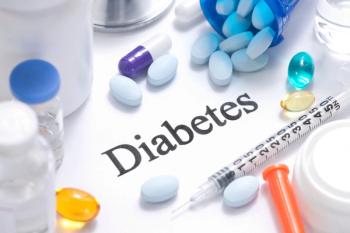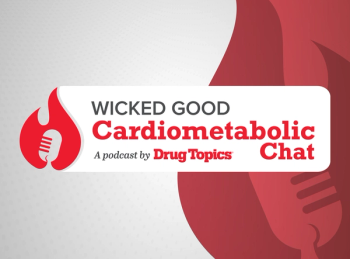
- Total Pharmacy® February 2025
- Volume 03
- Issue 01
Drug Price Increases Lead to Future Cost Savings for Medicare Beneficiaries
Provisions under the Inflation Reduction Act have ensured cost savings for patients prescribed drugs covered under Medicare Part B.
Because manufacturers raised their prescription drug prices faster than the rate of inflation, Medicare Part B enrollees will see a decreased coinsurance rate for any of the 64 drugs that increased in price. This benefit, laid out by the Inflation Reduction Act (IRA) of 2022, will be available for beneficiaries from January 1 to March 31, 2025, according to a US Department of Health and Human Services (HHS) news release.1
“The [IRA] is working to lower prescription drug costs for millions of people,” said HHS Secretary Xavier Becerra, JD. “By discouraging drug companies from raising their prices faster than inflation, we are keeping prices affordable for the people with Medicare who rely on these drugs to live healthier lives. The law has also capped out-of-pocket costs and finally allows Medicare the right to negotiate lower prices.”
Of the 64 drugs that saw recent price increases, a total of 850,000-plus Medicare enrollees consistently rely on at least 1 of these drugs. Thanks to the IRA’s Medicare Prescription Drug Inflation Rebate Program, patients with Medicare have seen price decreases and out-of-pocket caps since April of 2023. Furthermore, due to the IRA’s provisions, patients could save anywhere from $1 to over $10,000 a day on the included prescription drugs.1
“The Inflation Reduction Act is lowering prescription drug costs so that people can access the medications they need,” said Centers for Medicare & Medicaid Services (CMS) Administrator Chiquita Brooks-LaSure. “As we head into 2025, people with Medicare will feel substantial relief from high drug prices.”
READ MORE:
With several narratives circulating regarding who’s to blame for increasing drug prices in the US, federal legislation is finally coming to fruition and saving thousands of US patients money at the pharmacy counter. And while over 50 life-saving drugs will be available for Medicare beneficiaries at lower prices than expected next year, there are even more IRA provisions that are set to benefit patients further.
“In addition to lower cost-sharing for certain drugs whose prices have increased above the rate of inflation, people with Medicare prescription drug coverage will have their annual out-of-pocket costs capped at $2,000 for the first time,” continued Brooks-LaSure.1 According to the HHS news release, this provision will yield the highest amount of cost savings compared with any other IRA statute yet.
Beneficiaries will also be met with a more efficient out-of-pocket payment option for their prescription drugs. Instead of having to cover all medication costs up front, patients will have the option to spread out their out-of-pocket costs throughout the calendar year. With some patients paying thousands of dollars a month for 1 medication, their ease of making the appropriate payments is set to increase.
The main hope of the aptly named Inflation Reduction Act was to reduce inflation within the US. While it has been enacted for nearly 2 years now, there is dual support and opposition from both sides of the aisle in Washington. With some policymakers praising the legislation and making it a key focus on the Hill, others—like US Representative Mike Kelly (R, Pennsylvania)—have opposed the bill in what they think is a “wasteful $740 billion.”2
“Across the economy, the IRA is creating opportunities to build projects, hire workers, and manufacture equipment needed to strengthen domestic supply chains, lower household energy costs while reducing greenhouse gas emissions, and pay good wages for those efforts,” according to a US Department of the Treasury news release.3
With the IRA dealing with inflation and the US’ multitude of supply chains in various markets, its impact on prescription drug prices is just 1 small part of the legislation’s provisions. And while other parts of the bill may not have a consensus of support from political leaders, what it’s doing for close to 1 million Medicare patients across the country is a meaningful win for the US economy and health care system as a whole.
“It is a success story for the American people,” concluded Becerra.1
READ MORE:
Pharmacy practice is always changing. Stay ahead of the curve: Sign up for our
References
1. HHS announces cost savings for 64 prescription drugs thanks to the Medicare Prescription Drug Inflation Rebate Program established by the Biden-Harris Administration’s lower cost prescription drug law. News Release. US Department of Health and Human Services. December 20, 2024. https://www.hhs.gov/about/news/2024/12/20/hhs-announces-cost-savings-64-prescription-drugs-thanks-medicare-prescription-drug-inflation-rebate-program-established-biden-harris-administration-lower-cost-prescription-drug-law.html
2. Kelly opposes democrats’ wasteful $740 billion so-called “Inflation Reduction Act.” Office of US Representative Mike Kelly. August 12, 2022. Accessed December 23, 2024. https://kelly.house.gov/media/press-releases/kelly-opposes-democrats-wasteful-740-billion-so-called-inflation-reduction-act
3. Inflation Reduction Act. US Department of the Treasury. Accessed December 23, 2024. https://home.treasury.gov/policy-issues/inflation-reduction-act
Articles in this issue
9 months ago
Maximum (Un)Fair Price9 months ago
Your 2025 Pharmacy Legislation UpdateNewsletter
Pharmacy practice is always changing. Stay ahead of the curve with the Drug Topics newsletter and get the latest drug information, industry trends, and patient care tips.





















































































































































